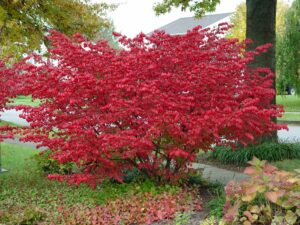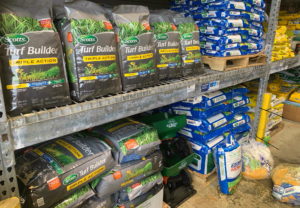Goodbye Burning Bush and Privet
December 6th, 2022
Five more invasive landscape plants are about to bite the dust in Pennsylvania.

Burning bushes are to be phased out of sale in Pennsylvania for being invasive.
Come Jan. 10, the state Department of Agriculture is adding burning bush and four species of privets (the Japanese, European, Chinese, and border types) to the state’s Controlled Plant and Noxious Weeds list.
Burning bush is a widely planted version of euonymus that turns bright red in fall, while privet is an old-fashioned evergreen hedge plant that looks a bit like boxwood.
Both produce seeds that spread readily, where these wild and durable non-natives usually elbow out natives that are more valuable to our local wildlife and pollinators.
The burning-bush and privet bans are being phased in, meaning that remaining stocks of the plants will be available for sale until a stop-sale cutoff date.
Ag Department press secretary Shannon Powers says the department will announce the cutoff dates in January along with procedures for retailers and recommended native alternatives.
She adds that “homeowners will not be asked to remove bushes,” but they are “encouraged” to do so.
These latest plant bans are part of a state crackdown on invasive plants that began in late 2021 and early 2022 when Japanese barberries, flowering (callery) pears, ravenna grass, Japanese stiltgrass, garlic mustard, and common and glossy buckthorns were added to the noxious-weed list.
See the full list of plants on Pennsylvania’s noxious-weeds list
Powers said that Japanese barberries will be banned from sale as of Oct. 8, 2023, and flowering pears will be banned as of Feb. 10, 2024. Glossy buckthorn’s grace period ends in February 2023. (The others aren’t widely available in garden centers or aren’t sold at all.)











